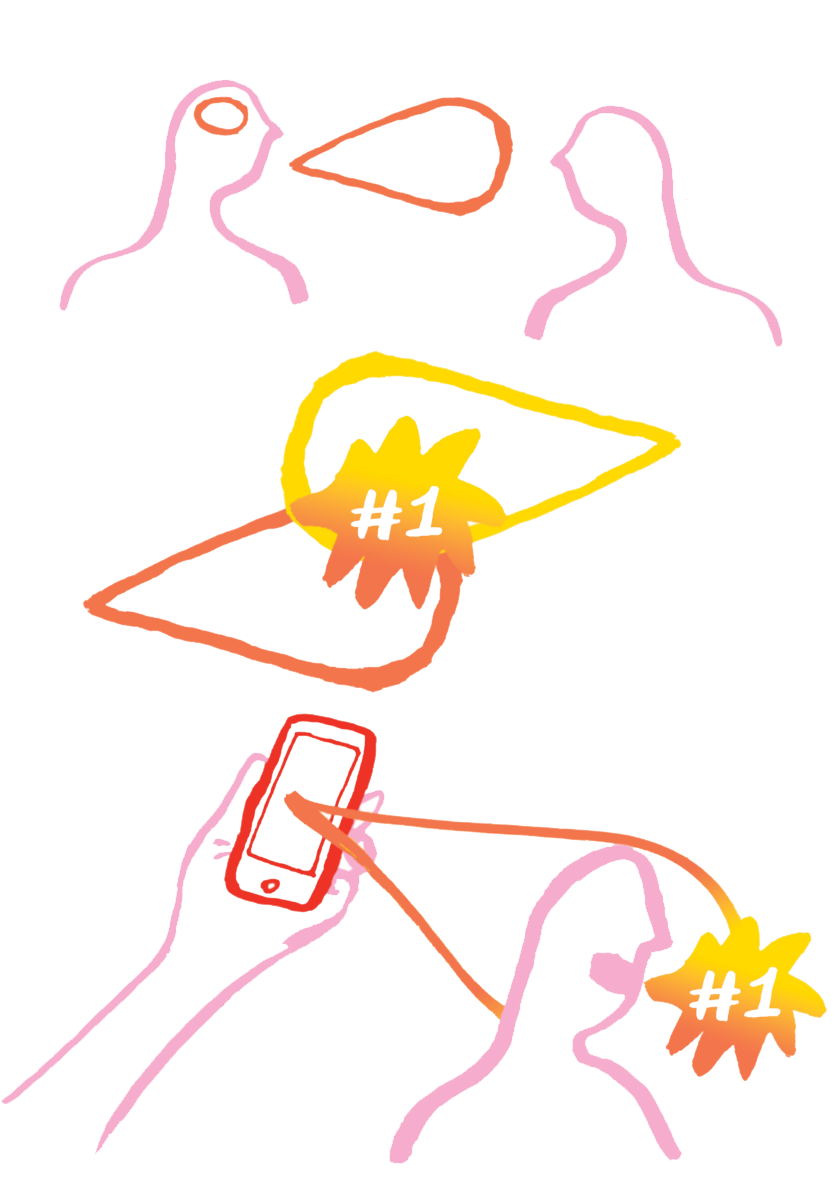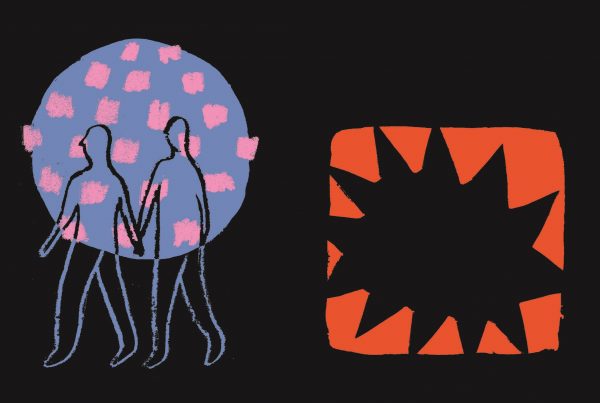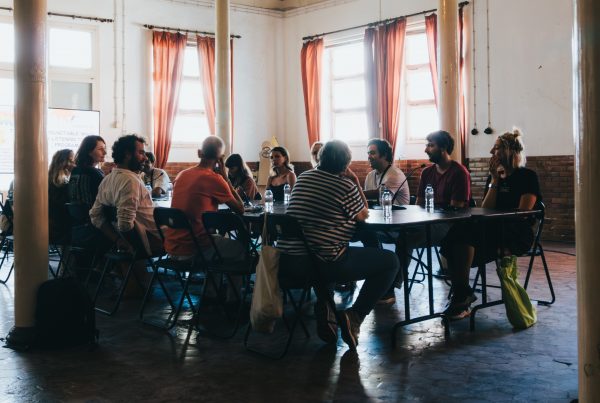Aimee Cliff is a freelance music and culture journalist based in London. She writes for The Guardian, Pitchfork, Dazed, and Vice.
Hoje em dia, há menos glamour. “É como manter o motor oleado”, diz Ben Kohn, rindo. “É como se não tivesses de te preocupar em arranjar um emprego decente por mais uns anos.”
Kohn, Tom Barnes e Peter Kelleher começaram a escrever canções juntos quando eram crianças, num barracão de jardim. Hoje, sentados à conversa no seu estúdio em Richmond, falam com entusiasmo uns por cima dos outros, enquanto discutem o seu último êxito da tabela, a balada angustiada de Lewis Capaldi, Someone You Loved.
Chegar ao topo das tabelas com Lewis em 2010, diz Kelleher, foi como uma injecção de alento, já que tinham passado quatro anos desde que tinham alcançado o seu último single nº 1 (Don’t Be So Hard on Yourself, de Jess Glynne). Barnes diz que a rotatividade das tabelas durante a era pré-streaming fazia com que fosse muito mais fácil levar uma canção ao top: “Na altura, tinhas provavelmente, por ano, entre 45 e 50 singles nº 1 na tabela, enquanto agora tens 10.”
“Na altura do Dappy, havia pré-vendas”, acrescenta Kelleher. “Depois, numa semana as tabelas ficavam ao rubro.” Sem dúvida que esta década de música pop tem assistido a uma evolução mais rápida do que qualquer outra anterior. Os apetites insaciáveis da era digital e a quantidade de música que preenche a playlist semanal New Music Friday do Spotify tornam mais difícil do que nunca conseguir um lugar de destaque. Como é que será, então, para um criador profissional de êxitos pop trabalhar numa época tão instável e competitiva? Para Camille Purcell, conhecida como Kamille e autora de canções para Little Mix, Clean Bandit e Mabel, hoje em dia é tudo sobre batidas interessantes e não sobre refrães. “Há cinco anos, tinhas de ter um refrão espectacular”, diz. “Agora, essa não é a regra.” E refere o domínio do hip-hop como a causa para esta tendência, mais orientada para canções pop suaves, porque “aqueles refrães são tão simples que não têm nada que saber. A produção é mínima”.

Kamille diz que se inspira frequentemente na “linguagem viral” dos posts nas redes sociais e nos memes, e que as letras pop estão a tornar-se “muito mais reais e certeiras – super coloquiais”. Kohn, dos TMS, concorda: “Houve definitivamente um período em que as pessoas escreviam canções que eram como Titanium”, e descreve a história fortemente metafórica de Sia sobre resiliência pessoal como uma “grande canção temática”. “Ao passo que agora, eu sinto que o que os artistas dizem muitas vezes é: ‘Tem de soar como se eu o dissesse na realidade’.”
As grandes canções pop também estão a abordar temas diferentes em relação ao que faziam no passado, com a saúde mental, a política e a ideia de empoderamento feminino a tornarem-se, todos eles, tópicos frequentes de discussão entre os compositores. MNEK, que além da sua própria música tem letras para Beyoncé, Dua Lipa and Little Mix, acredita que é importante adaptar as canções para que elas se tornem pessoais para o artista que as interpreta.
Quando Dua Lipa pegou na sua faixa IDGAF, por exemplo, ela foi com ele para o estúdio para reescrever a letra e torná-la mais relevante para si. MNEK também contribuiu para a canção OK (Anxiety Anthem) do álbum de estreia de Mabel, de 2019. “Fiquei muito orgulhoso por ela ter sido capaz de se abrir comigo. Isso fortaleceu mesmo a nossa amizade”, diz, e compara as sessões de composição de letras a terapia. “Constróis relações com estes artistas.”
Ali Tamposi – compositora de Los Angeles que trabalhou na canção Señorita de Camila Cabello e Shawn Mendes – diz que esta mudança de temáticas reflecte uma mudança social mais ampla. “A linguagem está a mudar”, diz. “Tem-se assistido a uma enorme ascensão do empoderamento feminino. E eu sinto, definitivamente, que os homens estão a tornar-se muito mais vulneráveis em relação às coisas de que estão a falar. Os artistas estão dispostos a falar sobre as suas fraquezas.”
Enquanto o âmbito dos temas da pop se expandiu, o tempo de promoção que os artistas têm para os divulgar encolheu: sair do anonimato já não tem tanto que ver com entrar numa playlist de rádio, mas sim com captar a atenção do ouvinte antes que ele mude para a próxima música, o que no Spotify acontece a um quarto das canções nos primeiros cinco segundos.
“Eu gosto imenso do R&B dos anos 90 e da primeira década do milénio, e essas canções não têm fim”, diz MNEK. “As canções, hoje em dia, não têm essa paciência. Temos tanto acesso a tudo agora, que é do tipo: ‘porquê esperar um minuto para uma canção começar a entrar no ouvido?’”.
O colectivo TMS diz que, quando está a escrever, tenta não pensar muito nesta nova tendência, cunhada em inglês com o termo “skip rates” para se referir à probabilidade de alguém saltar uma música nos primeiros 30 segundos. No entanto, Kelleher admite: “Haverá sempre atalhos para ajudar a tornar sete em cada dez canções num sucesso, seja pelo padrão das batidas, pelos sons de percussão, ou pela forma de estruturar as canções. Canções de primeira divisão vão ser êxitos por mérito próprio, mas há definitivamente dicas e truques para as outras.”
Alguns desses truques incluem manter-se a par das tendências, que estão em constante mudança. Kamille refere que, muitas vezes, começa as suas sessões por ouvir playlists de êxitos atuais, fazendo um balanço do panorama musical. Além disso, também é obcecada com o TikTok – uma aplicação de vídeo que permite aos utilizadores fazerem a sincronização labial de músicas – que, segundo ela, a está a ensinar sobre “o valor do entretenimento de uma canção”. Dito por outras palavras, o Tik Tok ajuda-a a perceber que batidas de um êxito pop podem ser transformadas num meme: “Eu penso em juntar partes de produções estranhas, porque isso, de facto, tende a funcionar no TikTok.”
“Em muitos aspectos, o que as pessoas hoje procuram são as coisas mais fora do vulgar”, diz Kohn. Já não existe propriamente uma fórmula para se conseguir um êxito pop como havia há 10 anos e, se compararmos os artistas que este ano alcançaram o nº 1, vemos uma enorme disparidade entre estilos, desde Lewis Capaldi a Lil Nas X, a Billie Eilish.
“A Eilish é um exemplo notável”, diz Kohn. “Se uma coisa soa a pop puro e duro, não vai a lado nenhum. De certa forma, existe mais pressão para se ser experimental.” Tamposi salienta que muitos dos maiores êxitos dos últimos anos têm sido o resultado de uma tendência própria da era da internet, que é a mistura entre géneros. “Misturar estilos urbanos com música country, música latina com pop… As pessoas estão a arriscar mais. Não há regras.” Isto pode tornar mais difícil prever o que será um single nº 1, mas esse é o desafio. “Criar torna-se muito mais excitante, porque não estamos a tentar ajustar-nos a uma ideia de pop perfeita.”
“Isso é o que é interessante na música pop. A boa música pop não se está a esforçar muito para ser música pop”, diz Kohn. “Quando começas a escrever pop, a tendência natural é seres um bocadinho foleiro demais. Quando percebemos que podíamos misturar todas as nossas influências do hip-hop e do breakbeat, foi aí que as pessoas começaram a reagir: ‘Isto é muito fixe’.”
Os dias das limousines à porta da casa das suas mães podem ter chegado ao fim, mas, claramente, o mesmo não se poderá dizer do prazer em criar um grande êxito pop.
/ Tradução por Marta Gamito
English Version
Originally published in The Guardian
‘Do something weird that works on TikTok’: how to write a pop smash in 2020
These days, there is less glamour. “It’s more like resetting the clock,” says Ben Kohn, laughing. “It’s kind of like you bought yourself another couple of years to not get a proper job.”
Kohn, Tom Barnes and Peter Kelleher have been writing songs together since they were childhood friends, starting in a garden shed. Today, sitting down to chat in their Richmond studio, they speak excitedly over each other’s sentences as they discuss their latest chart topper, the anguished Lewis Capaldi ballad Someone You Loved. Getting to the top of the charts with Lewis in 2019, says Kelleher, was like “a shot in the arm”, as it had been four years since their last No 1 (Jess Glynne’s Don’t Be So Hard on Yourself). Barnes says that the rapid churn of the charts during the pre-streaming age made it much easier to take a new song to the top: “Back then, you’d probably get between 45 and 50 No 1s a year, whereas now you get 10.”
“Around the Dappy time, you had pre-sales,” adds Kelleher. “Then you were fired up [the charts] in week one.” This decade of pop music has arguably seen more rapid change than any before it. The insatiable appetites of the digital age and the sheer quantity of music that fills out Spotify’s weekly New Music Friday playlist make it harder than ever to cut through the noise. So what is it like to be a professional hitmaker in such an unstable and competitive time? For Camille Purcell, who releases music as Kamille and writes for Little Mix, Clean Bandit and Mabel, these days it’s all about interesting beats, not hooks. “Five years ago, you had to have a massive chorus,” she says. “Now, it’s not the rule.” She cites the dominance of hip-hop as the cause of this trend towards more muted pop songs, because “those choruses are so simple, there’s nothing to them. The production is so minimal.”
Kamille says she often takes inspiration from the “viral-led language” of social media posts and memes and that pop lyrics are becoming “so much more real and to the point – super conversational”. TMS’s Kohn agrees: “There was definitely a period when people were writing songs that were like Titanium,” he says, describing Sia’s heavily metaphorical tale of personal resilience as a “big themed song. Whereas now, I feel like the thing artists say a lot of the time is: ‘It’s got to sound like I’d actually say it.’”
Major pop songs are also tackling different subjects than they did in the past, with mental health, politics and the idea of female empowerment all becoming common subjects of discussion in the writers’ room. MNEK, who, in addition to his own music, has writing credits for Beyoncé, Dua Lipa and Little Mix, believes it is important to tweak songs so that they become personal for the artist singing them. When his track IDGAF was picked up by Dua Lipa, for example, she went in the studio with him to rewrite the lyrics and make them more relevant for her. He also worked on OK (Anxiety Anthem) for Mabel’s 2019 debut album. “I was very proud that she was able to open up to me. That really strengthened our friendship,” he says. He compares writing sessions to therapy. “You build relationships with these artists.”
Ali Tamposi – a Los Angeles-based writer who worked on Camila Cabello and Shawn Mendes’s Señorita – says this shift in subject matter reflects wider societal change. “The language is changing,” she says. “There’s been a huge surge in female empowerment. And I definitely feel that men are being way more vulnerable in the things they’re talking about. Artists are willing to talk about their weaknesses.”
While the scope of pop’s themes has expanded, the time in which artists have to air them has shrunk: breaking through is no longer so much about making it on to a radio playlist as it is about the catching a listener’s ear before they hit skip – which, on Spotify, happens to a quarter of songs in the first five seconds. “I love 90s and 00s R&B, and those songs go on for ever,” says MNEK. “Songs these days don’t have that patience. We have so much access to everything now, it’s like, why would you wait a minute for a song to kick in?”
TMS say they try not to think too much about skip rates when they are writing, but Kelleher notes: “In every era, there will be shortcuts that will help make a seven out of 10 into a hit, whether it’s beat pattern, drum sounds, ways of structuring songs. Songs on the top tier will succeed on their own merits, but there are definitely tips and tricks [for the others].” Some of those tricks include keeping on top of ever-changing trends – Kamille says she frequently begins her sessions by listening to playlists of current hits, taking stock of the musical landscape. She is also obsessed with TikTok, the video app that lets users lip-sync, which she says is teaching her about the “entertainment value of a song” – in other words, which bits of a hit can be turned into a meme: “I think about [adding] weird production parts, because that tends to really work on TikTok.”
“In many respects, what people are looking for now is the weirdest stuff,” Kohn says. There’s no longer as much of a formula to scoring a mainstream pop hit as there might have been 10 years ago – and comparing the artists who went to No 1 this year shows a massive disparity in styles, from Lewis Capaldi to Lil Nas X to Billie Eilish. “Eilish is a brilliant example,” says Kohn. “If something just sounds like completely straight pop, its sound doesn’t go anywhere. In a way, there’s more pressure to be experimental.” Tamposi notes that a lot of the biggest hits of recent years have been a result of the internet age’s tendency to cross-pollinate genres. “Mixing urban with country, Latin with pop – people are taking more sonic risks. There’s no rules,” she says. That might make it harder to predict what will be a No 1 hit, but that’s the fun of it. “It makes creating so much more exciting, because we’re not trying to fit in this perfect pop box.”
“That’s the interesting thing about pop music – the good pop music isn’t trying too hard to be pop music,” says Kohn. “The natural inclination when you start to write pop is almost to be a bit too cheesy. When we realised we could pour in all our hip-hop and breaks influences, that was when people started going: ‘This is pretty fun.’”
The days of limousines calling at their mums’ houses may be over, but the joy of crafting a smash hit clearly isn’t.



